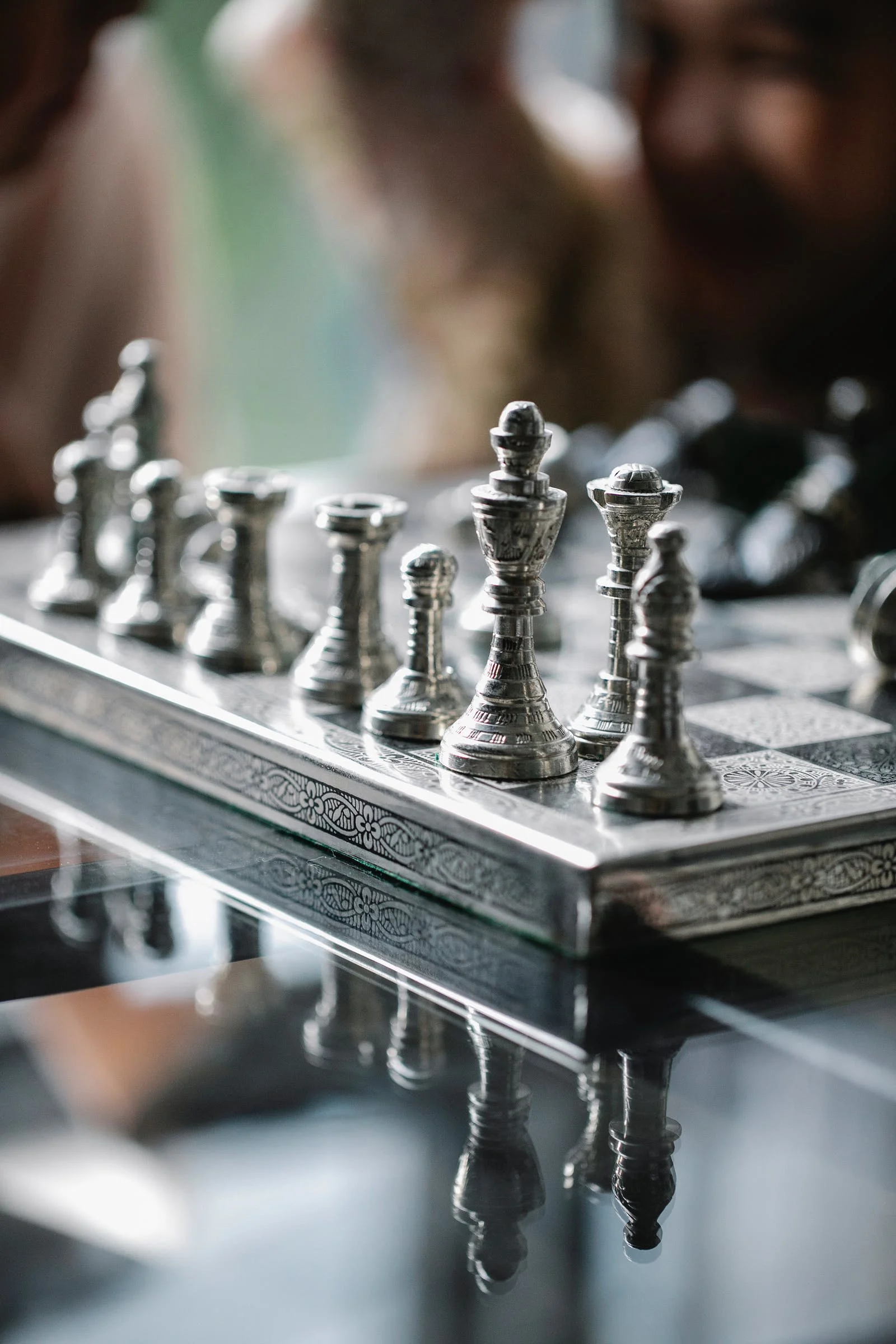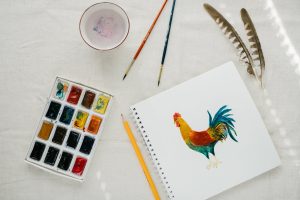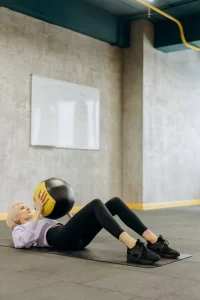HOW TO DRAW & PAINT FASTER: 15 TIPS FOR HIGH SCHOOL ART STUDENTS
Do you struggle to complete your Art projects on time? Even dedicated students can find it difficult to keep up with the demands of a Visual Art course. This category includes the skilled, perfectionist student who produces meticulous observational drawings and paintings. Teachers and parents may not know how to offer practical, constructive strategies for improvement. This article outlines fifteen ways high school Art students can work faster without sacrificing the quality of their work.
1. Use a ground
Working on a ground has many benefits. One benefit is a faster painting or drawing process. Ground covers a painting surface or drawing surface right from the beginning. It can be used as a mid-tone with only black or white being used to cover dark and light areas , or it can remain partially visible in the final piece. This makes it easier to create artwork.
2. Mix media/patterned surfaces/textural elements can be used.
You can quickly cover large areas of artwork with patterned, decorative, or textural objects, just like you would with a ground. This strategy should be taken with care. You must select only materials that support your project, usually with reference to an artist model.
3. You can work on multiple pieces at once
For Art students, it is very beneficial to work in series. This means that you can complete several drawings or paintings at once. This helps speed up work for many reasons.
- One color can be used in many different works without the need to stop and mix/wash brushes
- One work may be drying while another can be completed.
- It is possible to quickly master similar processes or techniques and then repeat them in subsequent works.
Additionally, when you are working on multiple pieces simultaneously, your ‘preciousness about the work can be lost. This leads to greater experimentation and faster work speeds.
4. You should paint things in the correct order. Background areas first
High school Art students are prone to painting things in an illogical order. The background should always be completed first, followed closely by the middle ground and ending with the foreground. This is easy to see when you consider a tree against a cloudy sky. The tree must be painted first. This can lead to the atmosphere being carefully painted around each branch and leaf. It is a tedious task that can take hours and end up looking a bit shabby. The advantage of painting the sky first is that you can use a large brush to quickly paint the sky and then add the tree over it. A painting with layers is also possible if you paint in the correct order. This gives it depth and luster. You may have a poor brand of paint if the subsequent layers do not cover the previous ones.
5. To create straight edges, use masking tape
Students are worried that it may be necessary to prove that straight lines can be painted by hand. However, this is not true. You can determine your control of the paintbrush by simply looking at the rest of your painting. In seconds, masking tape can create straight edges. This trick is easy to master and can save you hours. It will also make your pictures look cleaner and more professional. Masking tape is a great tool to save time and money. Get some today!
6. Artwork should be left intentionally incomplete.
Sometimes artist work is deliberately left incomplete. Artist students should not feel obliged to complete every item. In many cases, a fully rendered drawing may not be necessary. Sketchbooks are great for keeping drawings unfinished. It is a good idea to leave work unfinished when visually researching, exploring ideas, and trying out new media. This may be appropriate depending on the artist influence. It is a way to draw attention and direct attention to focal points within artworks.
7. You can leave out parts of a scene.
The final result of your project will be affected if you choose certain scenes to draw. You must use care and attention to ensure the image is consistent with the ideas in the project. This allows you to show your observational drawing skills while also saving time by omitting a part of the scene.
8. Selectively flatten tones
Students also have the option to flatten their tone, which is to eliminate any blending gradations between dark and light. The flattening technique should only be used in specific areas. A student who has flattened their tone unintentionally can make a poor grade. The artist examples below show that there are times when you can remove or reduce the tonal variation in an artwork with great success.
9. Lines are the most important.
High school students may find it appropriate to use only line for many reasons. It is often the application and maintenance of tone that can be time-consuming, so using line exclusively can offer a welcome relief. You can include blind drawings, contour drawings or cross contour drawings as part of your project. For more ideas, please see our collection of beautiful lines.
10. Add your photos
Although there are certain painting and drawing requirements for Fine Art Portfolios, photography can be a great tool to move a project along at a faster rate.
Original photography can also be used to help with composition planning. Examiners will consider this cheating and should be avoided. You should not, for example, paint a portrait of a person directly onto a photograph. The art-making process will be faster if the photograph is not visible in the final piece.
11. Move towards abstract or semi-abstract pieces.
For those who work slowly, abstract work is often the first thing that comes to mind. Students may be afraid that this might limit their ability to observe well enough. You can create abstract work from earlier realistic works such as the example shown below by Hania Cho.
Another strategy that works well is to combine realistic elements with abstract work. This creates a work that’s both realistic and abstract.
12. Use a bigger brush
It is incredibly liberating to paint with a larger brush, especially if your previous work was at a microscopical scale, picking out details the size of pinpricks. It is possible to get clean edges with a larger tool and achieve unexpected levels of detail. Even if it is just for the purpose of creating ground and adding background layers, most people enjoy using a larger brush.
13. Be more gestural
Images don’t have to be slow and tedious. Instead, they can be quickly created using expressive, rich mark-making. It can be difficult for students who are used to producing realistic, well-controlled drawings to adjust to this method. If you’re looking for more ideas, consider using charcoal, Indian ink and chunky graphite leads 5mm wide, large brushes, or paint with small pieces of card. This style of work can be beneficial to practice, especially when drawing from life and planning compositions.
14. Copy or trace your drawings.
In almost all cases, tracing is not allowed. However, there are times when it is useful to trace your owndrawings in high school Art projects. A compositional plan can be quickly expanded on a photocopier, and then traced/modified according to the requirements. Or, you could trace or photocopy your own drawing to test a new medium or technique. This should not be too repetitive.
The figure at the right of the first work was repeated in both. The second work also uses a number of time-saving techniques, including painting on a background, fading images away, and using lines only in certain places.
15. Use digital manipulation
Students in Painting / Fine Arts have exciting opportunities to scan existing artworks, edit them and combine them with other artworks. After a student is proficient in image manipulation software such as Adobe Photoshop, creating digital images can be very quick and easy to print. However, students should not overuse this technique and ensure that any digitally altered material is their original work.














Post Comment